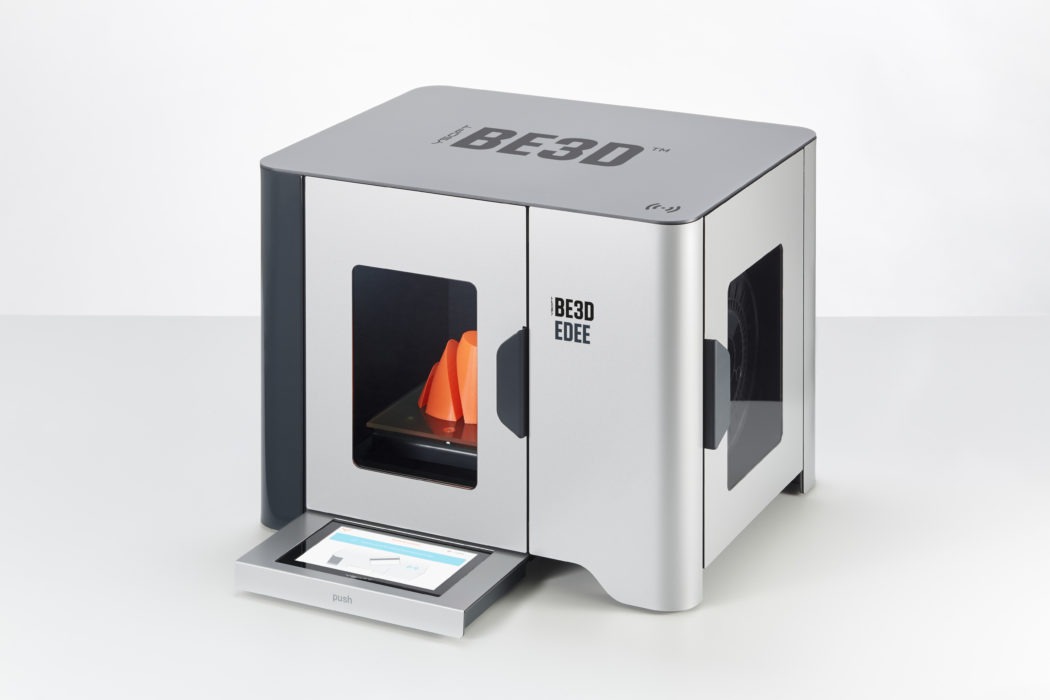The quality of Australian education is being enhanced by 3D printing, which brings innovative ideas to life and gives students opportunities to explore alternate ways of learning. Having exposure to 3D printing during school years also prepares students for the future workforce and drives more interest in science, technology, engineering and mathematics (STEM) pathways.
3D printing engages students in the curriculum and improves participation through hand-on experiences and activities. Entrepreneurial skills, creativity, problem solving and digital literacy are among the top most sought after skills for future careers.(1) 3D printing encourages students to think about tasks creatively and critically while actively learning, which in turn improves problem solving skills.
However, as 3D printing is a relatively new technology to emerge in education, this may mean teachers are also being exposed to it at the same time and need to learn how to use it.
One of the biggest challenges teachers face is a lack of time. Not only do teachers have to implement classes, mark assessments, supervise students and spend quality one-on-one time with them, on top if it all they need to plan lessons that meet the criteria of the Australian curriculum and be able to provide diverse learning opportunities to meet the needs of all students. (2)
Full time teachers spend an average of 75 to 106 hours working each week. In a report by the University of Sydney and Curtin University, it was found that of the top ten activities teachers do on a daily basis, planning and preparing lessons take the most amount of their time. Creating different lessons that use the curriculum to meet the diverse need of students, and developing strategies to meet learning needs and engage students were also noted to contribute to taking up a majority of teacher’s working hours. (3)
The solution for this is having pre-planned activities and lessons available that incorporate 3D printing into the classroom without added stress on educators. There needs to be lessons and activities that will engage students, as well as easy to understand ‘how to’ guides to use the machines. This way teachers can spend more time helping students and getting involved in lessons than having to stress over the curriculum criteria and learning to use new technology.
YSoft’s be3D Academy is designed for teachers to overcome this challenge and ensure quality educational experiences for students. With an online collection of 3D lesson plans already developed to fit with school curriculums, a 3D model database and 3D print training designed for students to understand, educators have all the resources needed for classroom activities that engage students.
be3D Academy meets educator’s needs through:
· Safety. The YSoft be3D eDee3D printer, used for be3D Academy, has an enclosed chamber which remains locked until the model has been completed or if the job is stopped. Students and teachers have their own credentials to access the printer, start jobs and retrieve completed models, ensuring safety before, during and after the 3D printer is building, and protecting models from being taken by others.
· Simplicity. be3D Academy requires no additional skills other than typical computer skills, with the eDee printer software able to provide step-by-step instructions, alerts and previews.
· Immersive learning. 3D printing captures the attention of students and engages them in activities that are not only educational, but fun at the same time. be3D Academy lessons encourage creative thinking as students actively learn through discovery.
· Curriculum requirements. Y Soft worked with educators to create lessons and safety measures suitable for the classroom environment. 3D print management software has also been included to track the 3D print activity and costs.
Furthermore, be3D Academy is equipped with videos, student worksheets and presentations for each activity. Some of the 3D lesson plans include: building a robotic Mars rover, creating a rubber band plane, constructing a Da Vinci Bridge, and designing a Mousetrap racer to travel the furthest distance possible.
Students benefit from having 3D printing available during classroom lessons that provide them with valuable skills for the future workforce. Schools should consider the opportunity to not only provide their students with 3D printing programs, but also to assist teaching staff with pre-planned lessons and activities. With the support from 3D providers available, it makes incorporating this technology into schools much easier than they might expect.
(1) https://www.careers.govt.nz/articles/employability-skills-are-the-heart-of-the-future/
(2) https://www.australiancurriculum.edu.au/resources/student-diversity/
(3) Understanding work in schools: The foundation for teaching and learning, McGrath-Champ, Wilson, Stacey and Fitzgerald, 2018https://news.nswtf.org.au/application/files/7315/3110/0204/Understanding-Work-In-Schools.pdf
Adam O’Neill is managing director, Y Soft


Latest posts by Education Technology Solutions (see all)
- Network Technologies Driving Sustainability for Education and Hospitality in 2025 - May 6, 2025
- Keypath Education Launches AI-enabled Short Course Platform to Drive Career Progression for busy Professionals - February 19, 2025
- Lumify Work Partners with AI CERTs™ to Bring Cutting-Edge AI Certifications to ANZ & PH - February 5, 2025
You must be logged in to post a comment.



There are no comments
Add yours